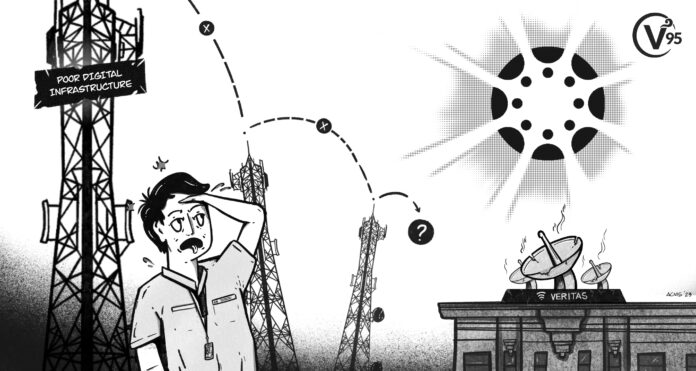The University of Santo Tomas (UST) is embarking on a transformative journey that invites optimism but also warrants cautious reflection. The shift from Blackboard to the Canvas learning management system (LMS) in the aftermath of the pandemic is another concession to the new normal. As UST’s academic community struggles to adjust, it is only natural to ponder the wisdom of this transition while not ignoring the problems it may hold.
The lingering imprints of the Covid-19 pandemic remain visible, casting a backdrop of resilience and adaptability against which UST’s decision unfolds. Like countless peers in education, UST underwent a swift transformation to fully online learning, a formidable task for students, educators, and administrators who navigated this uncharted territory almost overnight. This shift has unearthed profound psychological and pedagogical challenges, marking a testament to their collective fortitude against the unexpected.
Amidst these ongoing efforts to revert to normalcy and evolve, UST’s administration has chosen a path that simultaneously disrupts and propels the process. The move from the familiar Blackboard LMS, a two-decade stronghold, to the Canvas platform might appear a disregard for stability’s value during tumultuous times. However, this decision can also be seen as a testament to UST’s commitment to growth and innovation.
UST’s pioneering spirit was evident when it embraced the Blackboard LMS in 2003, a move that positioned the University as a trailblazer among Philippine educational institutions. The introduction of the UST Cloud Campus through Blackboard and EdTech in 2018 further solidified its dedication to online and asynchronous learning, which proved invaluable during the pandemic. Yet, even with this extensive history, the imperfections inherent in online learning persisted.
Innovation enthusiasts advocate adaptability as a cornerstone of progress while being mindful of practical realities. Learning curves are a natural part of personal development, but also take their toll on energy, focus, and morale.
The rapid pace of the transition raises crucial concerns regarding readiness. Can UST’s on-campus online infrastructure effectively support the hybrid class schedules that combine online and onsite learning every day? Despite attempts to balance these approaches, there are instances where students are required to participate in online classes while being physically present on campus. This situation particularly emphasizes the challenge posed by the inconsistent reliability of the campus Wi-Fi network, Veritas. Are UST’s educators well-equipped to navigate Canvas effectively? While younger faculty may have acclimatized faster, the shift could be more challenging for senior members. Similarly, while digital-native students are well-positioned to adapt, comprehensive training and ample lead time remain pivotal.
UST’s shift to Canvas carries the potential to redefine its educational landscape, fostering a harmonious synergy between tradition and innovation. To realize this potential, UST must prioritize the preparation of its infrastructure, empower educators, and ensure that students are equipped not just with devices, but with the knowledge and confidence to navigate this new terrain.
Indeed, learning curves are a reality, and the transition from traditional to virtual learning has already demanded Herculean efforts. While adversity can nurture resilience and growth, the present realities must not be masked. UST’s audacious step carries a tangible cost: the diversion of energy and focus from genuine learning pursuits.
In this era of transformation, the key to success lies in striking a balance between innovation and preparedness. The Canvas transition is more than just a shift in technology; it is a commitment to shaping an enriched educational future. By addressing the questions of preparedness head-on, UST can pave the way for a seamless journey that truly empowers its community of learners and educators.












